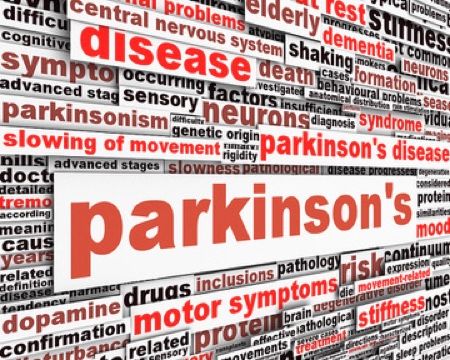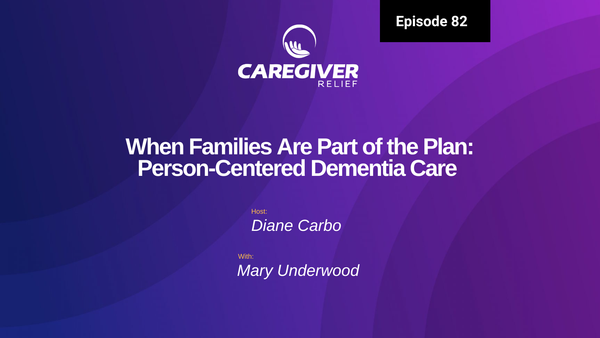Can Lewy Body Dementia Symptoms Get Worse Suddenly?
Lewy Body Dementia symptoms can worsen suddenly, leaving caregivers unprepared. Learn about triggers like infections, medications, or stress, and how to manage these changes. Empower yourself with tips to provide care and recognize signs for better response.

Lewy Body Dementia (LBD) is a progressive neurodegenerative disorder estimated to affect as many as 1.4 million people in the United States. It is most commonly diagnosed in older adults, with 70 percent of cases appearing in people over the age of 65. As a type of dementia, LBD affects cognition, thinking, behavior, and mood, requiring a great deal of care and support for those living with this condition.
The symptoms of LBD can vary greatly, depending on the individual affected and the severity of their condition. Generally, individuals with LBD experience varying levels of communication and memory problems, behavioral difficulties, and changes in movement. As a progressive disease, these symptoms develop gradually and intensify over time, often requiring increasing assistance due to declining cognitive and motor abilities.
In understanding LBD, it is important to note that there is no single cause of the disorder responsible for each case. Certain medical conditions or lifestyle choices can increase an individual’s risk for developing LBD, but the exact cause remains unknown. Treatments, however, are available to help manage the symptoms of LBD and slow down progression.
What is Lewy Body Dementia?
Lewy body dementia (LBD) is a progressive brain disorder caused by abnormal deposits of a protein called alpha-synuclein in the brain. It produces a decline in cognitive abilities, leading to issues with memory, speech, language, problem solving, and thinking.
LBD typically affects people over the age of 50 and is believed to account for between 10 and 25 percent of all dementia cases.
Common symptoms of LBD include:
- Trouble sleeping
- Visual hallucinations
- Changes in behavior
- Significant mood swings
- Movement problems like tremors or slowed movements
- Impaired sense of smell
Symptoms and Progression
Lewy body dementia (LBD) is a progressive neurological disorder that profoundly impacts thinking, movement, and behavior. The symptoms of LBD can vary significantly from one person to another, but they often include cognitive decline, memory loss, and difficulty with problem-solving and decision-making. Additionally, individuals may experience mood and behavioral changes, visual hallucinations, sleep disturbances, and Parkinson’s-like symptoms such as tremors and muscle stiffness.
The progression of LBD is notably unpredictable. Some individuals may experience a gradual decline in cognitive and motor functions, while others might face a more rapid progression of symptoms. This fluctuation can make it challenging to predict the course of the disease. On average, the duration of LBD ranges from 5 to 8 years, but it can last anywhere from 2 to 20 years, depending on various factors. Understanding the symptoms and progression of Lewy body dementia is crucial for providing appropriate care and support to those affected.
Types of Lewy Body Dementia
Lewy Body Dementia (LBD) can be categorized into two main types: Dementia with Lewy Bodies (DLB) and Parkinson’s Disease Dementia (PDD). Both types are characterized by the presence of abnormal protein deposits called Lewy bodies in the brain, but they differ in their initial symptoms and progression.
Dementia with Lewy Bodies (DLB) typically begins with cognitive symptoms such as memory loss, confusion, and difficulty with attention and executive functions. Visual hallucinations and fluctuations in cognitive abilities are also common early signs. Movement symptoms, similar to those seen in Parkinson’s disease, may develop later in the course of the illness.
Parkinson’s Disease Dementia (PDD), on the other hand, starts with the motor symptoms of Parkinson’s disease, such as tremors, muscle rigidity, and bradykinesia (slowness of movement). Cognitive decline and dementia symptoms usually appear at least a year after the onset of motor symptoms. Both types of LBD share many overlapping features, but the distinction lies in the timing and initial presentation of symptoms.
Understanding the differences between Dementia with Lewy Bodies and Parkinson’s Disease Dementia is essential for accurate diagnosis and tailored treatment plans. By recognizing the unique characteristics of each type, healthcare providers can better manage the symptoms and improve the quality of life for individuals living with Lewy body dementia.
Causes of Lewy Body Dementia
Lewy Body Dementia (LBD) is a type of progressive dementia that can affect an individual’s cognition, behavior, and movement, and its symptoms may be similar to those of other neurological disorders such as Alzheimer's and Parkinson's disease. It is most commonly diagnosed in elderly individuals, although it is not solely limited to this age group. The cause of LBD is still unknown, but there are some possible environmental and genetic factors that may contribute to its development.
Environmental factors that may be linked to LBD include prolonged exposure to certain medications or pollutants, traumatic brain injuries, and certain infections. Research suggests that genetics also play a role in some cases of LBD, as it has been observed to run in families. However, the exact genetic link has yet to be determined.
It is important to note that the development of LBD cannot be attributed to any single factor. While some studies point to a combination of environmental and genetic elements, more research is needed in order to fully understand what causes LBD.
Treatment
Individuals living with Lewy Body Dementia (LBD) may experience a wide range of symptoms. While there is no known cure for LBD, there are treatments that can help in managing the symptoms. These treatments include both medical and non-medical approaches.
Medical treatments include medications for improving cognitive abilities or reducing the severity of symptoms such as difficulty with movement or sleep disturbances. Additionally, doctors may suggest physical or occupational therapy to increase strength and flexibility, and speech-language therapy to help improve communication. Clinical trials are crucial for developing new treatments and advancing research in LBD.
Non-medical treatments include cognitive behavior therapy, lifestyle changes such as getting enough rest and exercise, maintaining a healthy diet, and joining a support group. Moreover, it is important to manage stress as it can worsen symptoms associated with LBD.
Though treatments may help in managing the symptoms associated with LBD, they cannot stop the condition from progressing. It is important to discuss any concerns with a doctor who can provide advice on the best treatment options.
Complications of Lewy Body Dementia
Lewy Body Dementia (LBD) is a type of dementia that can present with a range of symptoms. It is particularly common among elderly adults and can lead to progressive cognitive decline. Common signs and symptoms may include memory issues, confusion, difficulty with speaking or understanding language, changes in behavior, muscle stiffness and difficulty with mobility.
When it comes to the complications of LBD, one of the main concerns is the potential for sudden worsening. This can be caused by a range of factors, such as infection, changes in medication or environment, or even psychological stress. Additionally, issues related to the autonomic nervous system (ANS) can arise, leading to dysautonomia. This encompasses a variety of disorders resulting from an improperly functioning ANS, which regulates involuntary bodily functions such as heart rate and digestion. It is important to be aware of these potential risks and monitor the health of someone living with LBD.
In the case of sudden worsening, it is important to seek medical help as soon as possible. A doctor will be able to assess the situation and recommend a course of action for managing the condition. In some cases, antibiotics may be necessary to treat any underlying infections, while other medications may be recommended to help manage specific symptoms.
Diagnosis of Lewy Body Dementia
Lewy body dementia diagnosed is typically achieved by a combination of physical examinations, laboratory tests, and neurological evaluations. The doctor will assess an individual’s medical history, perform mental status testing, and conduct imaging tests such as an MRI or CT scan. In addition, the doctor may order blood or urine tests to rule out other illnesses that can cause similar symptoms.
There are no definitive tests for diagnosing LBD, so the doctor must rely on the patient’s medical history and symptoms to make their diagnosis. Some of the common indicators of LBD include memory loss, confusion, difficulty with movement and balance, and changes in behavior or personality. If any of these symptoms are present, the doctor may recommend further testing or make a diagnosis based on their observations.
In some cases, the doctor may also recommend a sleep study, an electroencephalogram (EEG), or other tests to rule out other conditions.
Preventing LBD and REM Sleep Behavior Disorder
Living with a diagnosis of Lewy Body Dementia (LBD) can be a challenging journey. However, there are steps that can be taken to reduce the risk of developing this diagnosis in the first place.
Exercise has been shown to help improve overall cognitive functioning and can help protect the brain from damage associated with dementia. Regular physical activity can help maintain the strength and flexibility of the muscles, which can improve mobility and reduce the risk of falls. Additionally, engaging in social activities helps to stimulate the mind and keeps your connections to other people strong. Finding activities that are enjoyable to you will provide an additional incentive to keep up these activities.
It is also important to practice healthy habits such as getting adequate restful sleep, maintaining a balanced diet, staying hydrated, and managing any chronic health conditions, such as diabetes or hypertension. These lifestyle modifications can all help to reduce the risks of developing LBD.
Diet Changes for Managing LBD Symptoms
Having a balanced diet can help individuals with LBD manage their condition more effectively. Certain nutrients can be beneficial in alleviating the symptoms of LBD, while others may increase or worsen them. It is important to recognize the importance of developing healthy eating habits in controlling the disease.
Foods that may help to reduce symptoms include:
- Fruits and vegetables – these should make up the bulk of your diet.
- Whole grains – provide essential vitamins and minerals.
- Lean proteins – such as fish, beans, and poultry.
- Healthy fats – found in nuts, seeds, avocados, and olive oil.
On the other hand, it is best to avoid processed foods, saturated fats, sugar, alcohol, and caffeine.
In addition to your diet, keeping well-hydrated is extremely beneficial in managing LBD symptoms. Cutting out drinks that are high in sugar and calories, like sodas and fruit juices, can have a huge impact on your overall health.
Routine for Optimal Physical Health
Having a routine of good sleep, hydration, and exercise is key to managing your physical health when living with Lewy Body Dementia (LBD). While this may be difficult for some individuals, it is important to try to maintain and set achievable goals each day.
Getting a good night's rest is essential to have a productive day. This includes sleeping for the recommended 7-8 hours per night and keeping your bedroom environment as comfortable and quiet as possible. Powering down electronics such as televisions or smartphones can help create a calm atmosphere to aid in better quality of sleep.
Staying hydrated throughout the day can also help promote proper bodily functions. Start each day with a glass of water and make sure to drink eight glasses of fluids (water, juices, decaffeinated beverages) throughout the day. When engaging in activities such as exercise or warm weather days, make sure to increase fluid intake even further.
Including some form of exercise into your daily schedule can help keep your body fit and strong. Start with low intensity exercises such as walking and gradually work up to more intense activities (such as aerobics or strength training) as your body adjusts. If able, take a few minutes each day to practice some stretching exercises to help relax your muscles and improve your flexibility.
Overall, maintaining a regular routine of good sleep, hydration, and exercise can help improve one's physical health when living with LBD.
Recent Research on Lewy Body Dementia
Recent research into Lewy Body Dementia (LBD) has made strides in improving our understanding of the condition and how it could be treated. Scientists have identified a link between the deposition of the Lewy bodies in the brain with a number of different chemicals that can contribute to the development of the disease. This research has made a great contribution to understanding the disease and has helped researchers develop new therapies and treatments.
In recent years, a number of novel drugs have been developed to treat LBD, such as Rivastigmine, which is a cholinesterase inhibitor used to improve cognitive functioning in people with LBD. There is also ongoing research into the use of other compounds for the treatment of LBD, such as the use of dopamine agonists and antagonists.
New research is also being conducted which looks at the effectiveness of non-pharmacological interventions for treating LBD, such as cognitive stimulation therapy. This involves a range of activities that are designed to improve cognitive functioning and delay the progression of symptoms, thus helping individuals stay independent for longer.
Overall, continued research into LBD is essential to developing better treatments and improved outcomes for individuals living with this illness. By understanding the disease and its causes, researchers can then develop therapies that are better suited to managing the condition and reducing its impact on an individual’s quality of life. The Lewy Body Dementia Association plays a crucial role in supporting research and providing resources for patients and caregivers.
Emotional Support with LBD
Living with a diagnosis of Lewy Body Dementia (LBD) can be difficult, both physically and emotionally for lewy body dementia patients. It is important to remember that you are not alone and there is access to emotional support when needed. There are a few ways an individual can access emotional support while living with LBD:
- Talk to friends and family. Having a compassionate and understanding party to talk to can be helpful. Talking about the feelings surrounding the diagnosis may help to relieve some of the emotional burden.
- Find a support group. There are LBD-specific support groups available for individuals to share their experiences with others and gain valuable advice and support from peers in similar situations.
- Reach out to a mental health professional. A mental health professional, such as a counselor or therapist, can provide helpful strategies and tools to manage emotions related to a diagnosis of LBD.
Gaining emotional support when living with LBD may also include taking time to relax, engage in activities that bring joy and pleasure, and focus on self-care. Taking time to practice mindfulness and deep breathing techniques can also help to ease distress.
Conclusion
Lewy Body Dementia is a disorder that can affect the elderly population and cause serious complications. While there is no cure for LBD, treatments are available to help manage symptoms. It is also important to pay attention to possible warning signs of sudden worsening and know when to seek medical attention. Additionally, making lifestyle changes such as following a healthy diet, exercising regularly, and getting enough sleep can help improve physical health. Unlike Alzheimer's disease, which primarily affects memory, LBD often presents with more pronounced motor symptoms and fluctuating cognition.
It is also beneficial to seek emotional support from family and friends, as well as organizations and groups specifically dedicated to people living with LBD. There are many resources available to help with understanding the condition and learning how to manage life with LBD. Finally, recent advancements in research have provided advances in understanding LBD, which gives hope for better treatments and management options.
You might also like this article:







